Menus
- In the basement of the performance graph
- Yamaha SR 400 is still kicked off today
- A proud 5800 euros against 3995 euros purchase price
- Arg passive seating position on the Mash Five Hundred
- Both motorcycles without ABS
- Resume
- Data and measured values
- Price comparison of the Yamaha SR 400 and the Mash Five Hundred
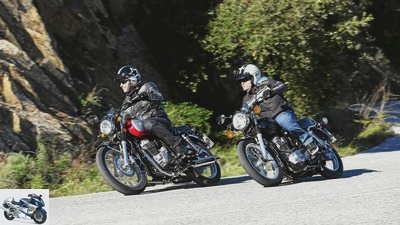
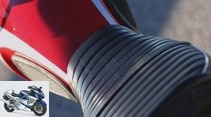
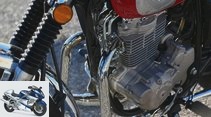
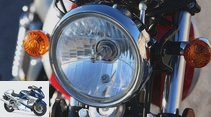
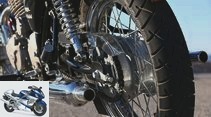
35 photos

1/35
“Weekend and sunshine and then the street with you alone …” Heart, what more do you want? A few, just a few extra horses. That might be possible?
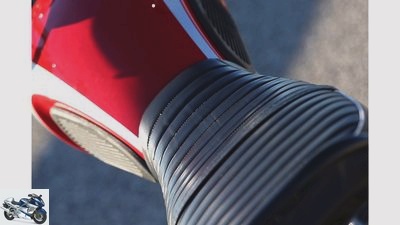
2/35
Lean upholstered bench amidships…

3/35
Mash Five Hundred.

4/35
Mash Five Hundred.
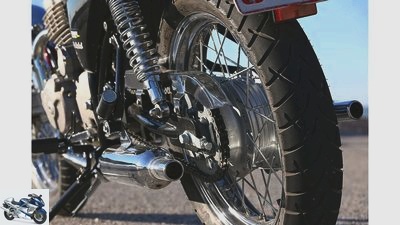
5/35
Mash Five Hundred.
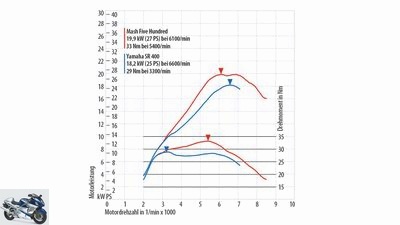
Source: MOTORCYCLE.
6/35
Yamaha SR 400 and Mash Five Hundred.
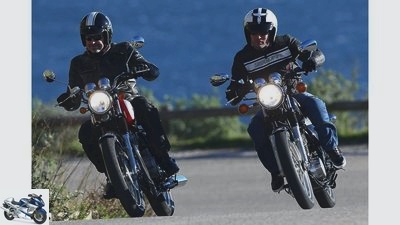
7/35
Yamaha SR 400 and Mash Five Hundred.
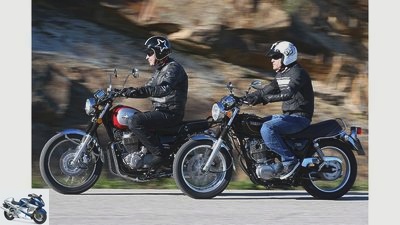
8/35
Yamaha SR 400 and Mash Five Hundred.
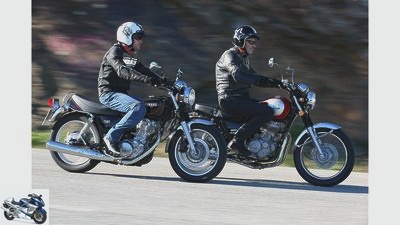
9/35
Yamaha SR 400 and Mash Five Hundred.
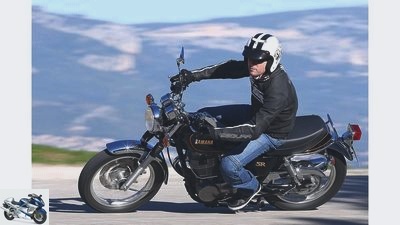
10/35
Yamaha SR 400 and Mash Five Hundred.
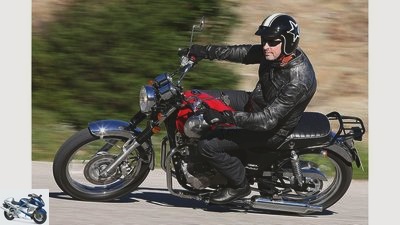
11/35
Yamaha SR 400 and Mash Five Hundred.
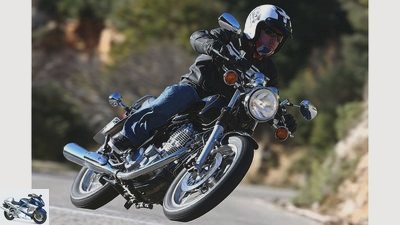
12/35
Yamaha SR 400 and Mash Five Hundred.
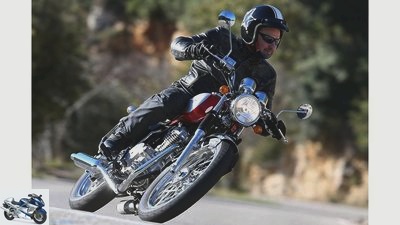
13/35
Yamaha SR 400 and Mash Five Hundred.
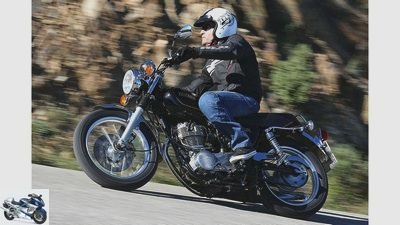
14/35
Yamaha SR 400 and Mash Five Hundred.
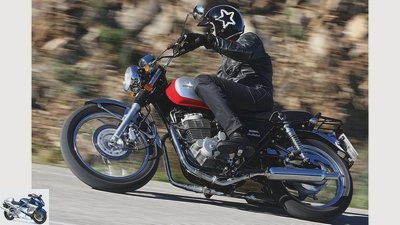
15/35
Yamaha SR 400 and Mash Five Hundred.
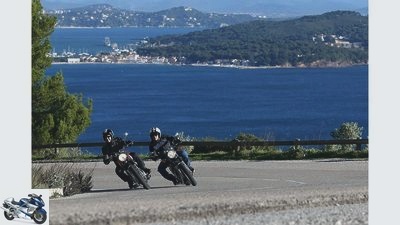
16/35
Yamaha SR 400 and Mash Five Hundred.
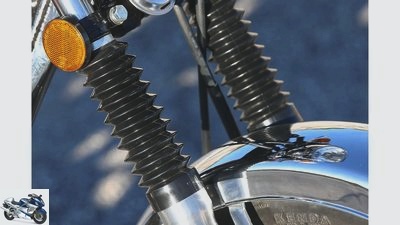
17/35
Front bellows…
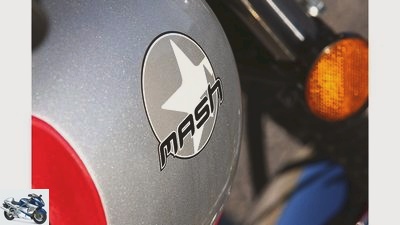
18/35
Mash Five Hundred.
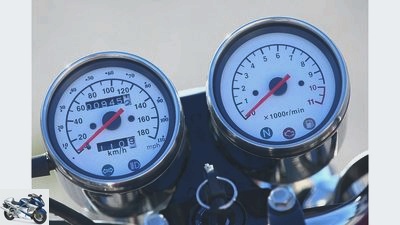
19/35
Classically simple cockpit with a very optimistic red area on the Mash Five Hundred.
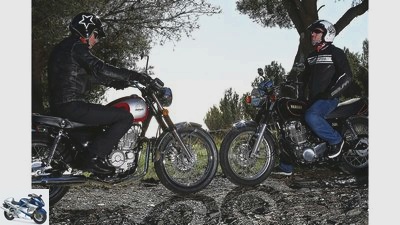
20/35
Yamaha SR 400 and Mash Five Hundred.
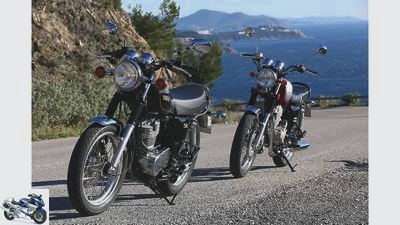
21/35
Yamaha SR 400 and Mash Five Hundred.
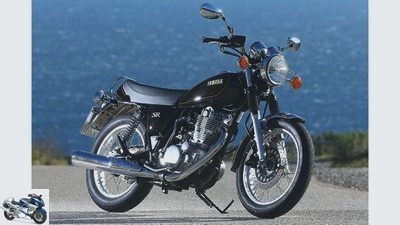
22/35
Yamaha SR 400.
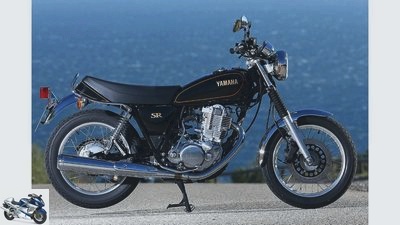
23/35
Yamaha SR 400.
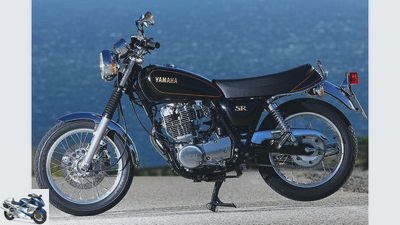
24/35
Yamaha SR 400.
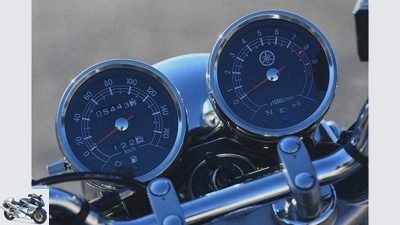
25/35
The simply noble instruments of the Yamaha SR 400.
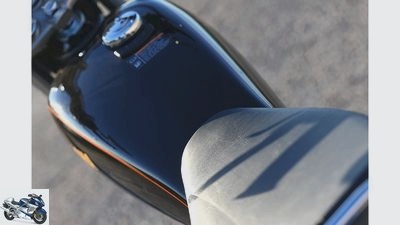
26/35
Yamaha SR 400.
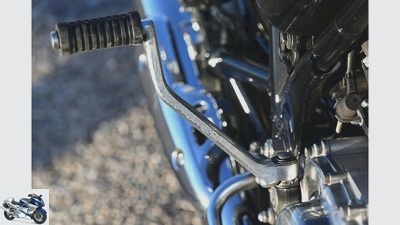
27/35
"You should step on these levers…"
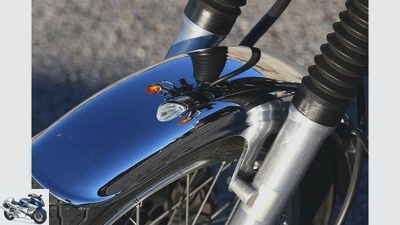
28/35
"… and you can shine in its splendor."
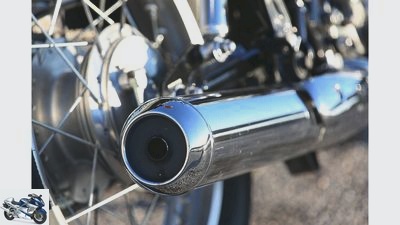
29/35
Dismiss more "Out" as "puff" – the transducer of the SR 400.

30/35
Yamaha SR 400.
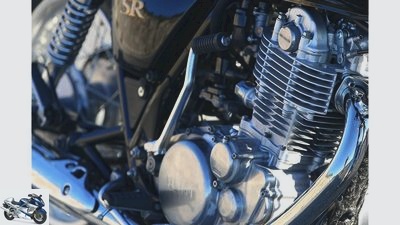
31/35
Yamaha SR 400.
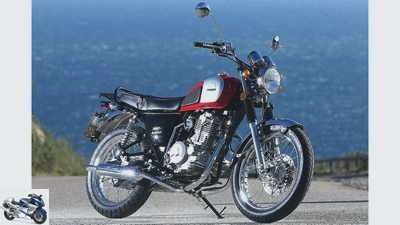
32/35
Mash Five Hundred.
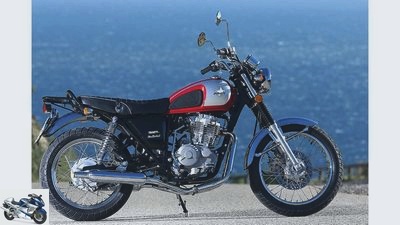
33/35
Mash Five Hundred.
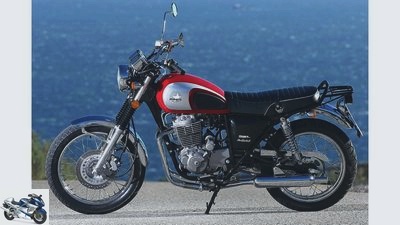
34/35
Mash Five Hundred.
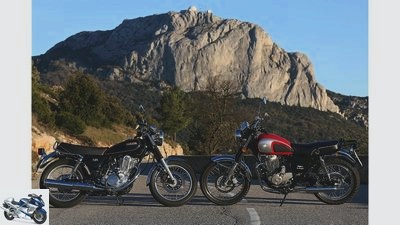
35/35
Yamaha SR 400 and Mash Five Hundred.
Yamaha SR 400 and Mash Five Hundred in the test
In the basement of the performance graph
The comparison test of the Yamaha SR 400 and Mash Five Hundred is a consideration of the lower end of the performance curve – and a contrast to the currently rampant performance excess.
M.an does not necessarily have to pay homage to asceticism in order to be at least skeptical of the excessive performance that has been rampant for some years, not only in the motorcycle sector. Some people wonder what the deeper meaning is when, on one side of the hallway, engineers put a great deal of effort into building a motorcycle with up to 200 HP liter output, and on the other side, computer scientists with exactly the same amount of effort do this with all sorts of electronic helpers, even for mere mortals have to make them mobile. A paradox from which our two test candidates are miles away.
Buy complete article
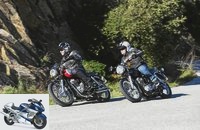
Yamaha SR 400 and Mash Five Hundred in the test
In the basement of the performance graph
Yamaha SR 400 and Mash Five Hundred well served. Let’s start with the Yamaha. Released in 1978, it wasn’t exactly the spearhead of motorcycle technology. On the contrary. With a cylinder, of course air-cooled, two valves, no electric starter and other bells and whistles, the whole thing packaged in an outfit that was already classic at the time, she was unintentionally the first representative of the retro wave. Regardless of this, it sold thousands of copies in Germany and remained largely unchanged in the range until 1999.
Yamaha SR 400 is still kicked off today
The current Yamaha SR 400 has already found 166 buyers in 2014 and is cut out of her grandmother’s cooling fins, although it now has to make do with 400 cubic meters instead of half a liter and an injection has replaced the carburetor. The reason for the reduction in displacement lies in the Japanese driving license regulations, because in their home country the SR is still in the program today. Anyone who has ever ridden an old SR will immediately feel at home on the new one. Switches, instruments, seating position – everything as usual. And since the electric starter is still missing today, kicking is the order of the day. Even back then, the horror stories of calves broken by the pistons kicking back and the like were stories that only ever came to the ears of the brother-in-law of an acquaintance. Nevertheless, it can still cause red heads for inexperienced kicks even today. A little feel for the material helps to bring the single cylinder to life: Kick the kick starter slowly until the resistance increases significantly, pull the deco lever, step through a little more – and then with a taste. And? Running! Thanks to injection, both cold and warm, always reliable and with constant idling.
Unfortunately, all that remains of the full single-cylinder beat of the past that is still hanging in your ear is a tired chatter. Unfortunately, the characteristic feature of the engine is also tired. 24 HP is not the world per se, and when it is given as anemic as with the Yamaha SR 400, the driving pleasure depends heavily on the route chosen. Note: the smaller, curvier and less traffic-free, the better. The Single feels most comfortable between 2500 and 6000 rpm, then the vibrations and consumption are limited at 3.6 liters. The difficulties begin as soon as inclines or slower road users get in the way.
A proud 5800 euros against 3995 euros purchase price
Because of the steam hammer! As soon as performance is required, it must be turned and switched mercilessly. Although the single starts to develop something like bite from 6000 rpm, at 7000 it is already over. In addition, the turning shop definitely does not correspond to the essence of the Yamaha SR 400. After all, the five-speed gearbox works smoothly and precisely. But thanks to the slim and classic-looking Metzeler ME 55 tires, the Yamaha can be easily angled. At a brisk pace, however, the quite softly tuned chassis quickly reaches its limits, and the pauses over the asphalt early on. On the other hand, the brake impresses with its good effect with a manageable use of force.
The workmanship and quality show the routine of the 35-year construction period. The price of the Yamaha SR 400 is a proud one at just under 5800 euros, and so we turn to the Mash Five Hundred, which is available for around two thirds, namely 3995 euros. Purists could argue that this bike is a collection of inconsistencies: The brand owner emphasizes the French on the mash, even though it comes from China. Five Hundred is written on the side covers, but the displacement is only 397 cm³. The design, including tank pads and manifold guides, uses the old Meriden Triumph Twins from the 1960s, although the drive is from a single piston engine, which in turn looks very similar to the Honda RVFC engines with radially arranged valves.
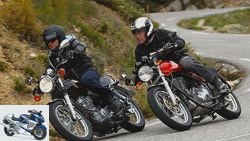
classic
Royal Enfield Continental GT and Yamaha SR 400 in the test
New oldies in comparison
read more

classic
On the move with the Yamaha SR 400 and SR 500
Little performance, lots of charm
read more
Arg passive seating position on the Mash Five Hundred
The pragmatist, on the other hand, is primarily oriented towards the practical and is initially pleased. The proportions are right, and the individual components as well as small details such as weld seams can also exist at second glance with the Mash Five Hundred. Not only the chrome-plated fenders, no, also the side covers are made of real sheet metal. There is also a luggage rack ex works.
When you sit up, the pleasure is first dampened: the combination of high handlebars that reach far back and footrests that are just as high and relatively far forward results in a very passive sitting position that takes getting used to, which is also quickly on the bench due to the weak cushioning of the seat Rump and thus depresses the mind. But the pragmatist enjoys the e-starter, which primarily brings the single to life. The kick starter, which is also available, only serves as a backup. What is annoying is that the engine stops when the side stand is unfolded, even when idling. So letting it run while standing is not. The alternative main stand is ruled out due to the lack of available recordings. But there is still the light switch, which is now threatened with extinction. However, he takes care of the instrument lighting – read and be amazed. Exclusively!
Both motorcycles without ABS
But as soon as the single is on, these things take a back seat. An audible, but not unpleasant roar escapes the two slim mufflers, which is supported by an audible tube from the air filter box under load. Compared to the Yamaha SR 400, the Mash Five Hundred turns out to be a sports fanatic. From 3000 rpm, the single does its best, the music plays between 5000 and 7500 rpm – after that it gets tough. At 8700 rpm, the rev limiter shows that, according to the instrument, there is still air for 1300 additional revolutions. It doesn’t matter in cruising mode. With 3.3 liters, the Mash is quite economical.
Despite the 19-inch front wheel, it scurries willingly through the Winkelwerk, even though the kendo tires do not inspire confidence. The chassis comes up with firm suspension and lax damping, especially at the rear, which is why short, hard impacts such as manhole covers go unchecked into the spinal cord. The brake operates much more bluntly and with higher operating forces than that of the Yamaha SR 400, but it is always in control of the situation. As with the SR, there is no ABS here either.
Resume
Time for a resume: Due to its higher quality appearance and its self-contained coherence, the Yamaha SR 400 can claim to be the better motorcycle. The one that is more fun is without a doubt the Mash Five Hundred due to the much livelier engine. And as long as there is no danger of having to keep up with the buddies on their 48-hp “rockets”, the following applies: a weekend with sunshine and then the road alone with you, that’s all I need to be happy. weekend and sunshine.




64 photos
Pictures: Yamaha SR 400 and Mash Five Hundred in the test
To home page
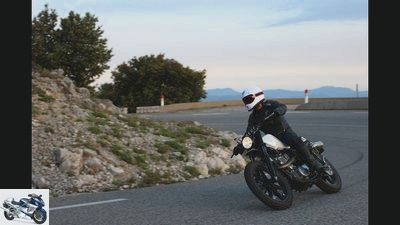
Yamaha

Yamaha
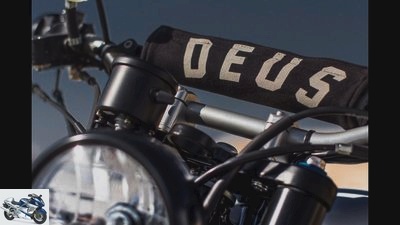
Yamaha
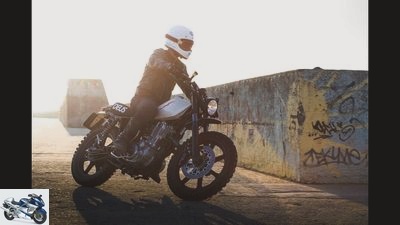
Yamaha

Yamaha
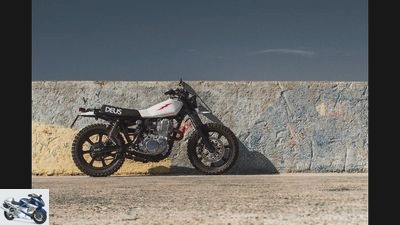
Yamaha
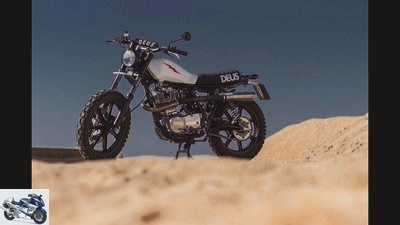
Yamaha
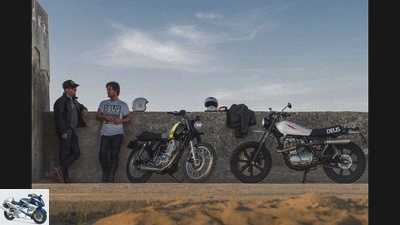
Yamaha
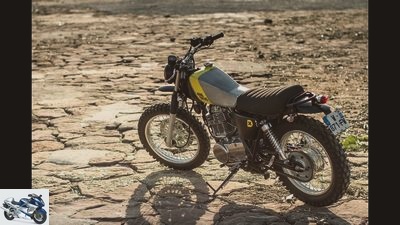
Yamaha
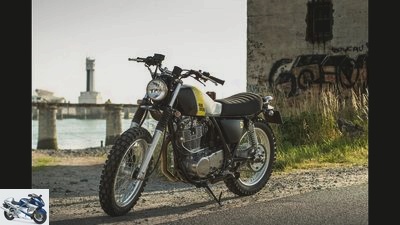
Yamaha
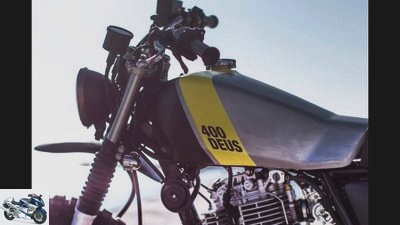
Yamaha
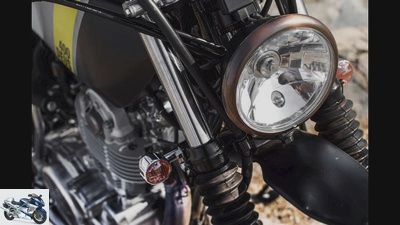
Yamaha
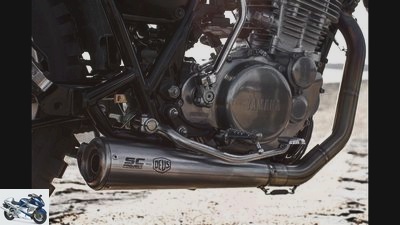
Yamaha
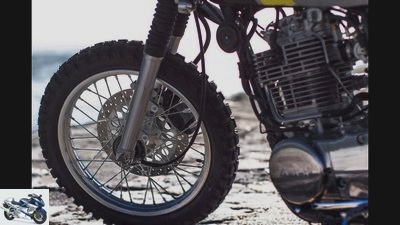
Yamaha
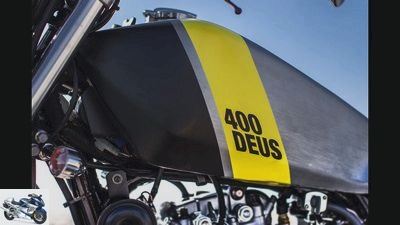
Yamaha

Yamaha
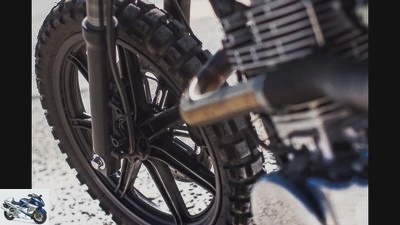
Yamaha
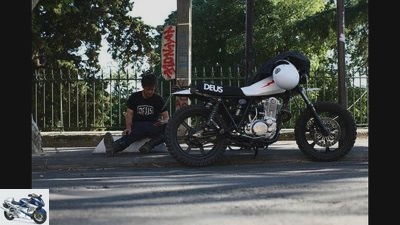
Yamaha
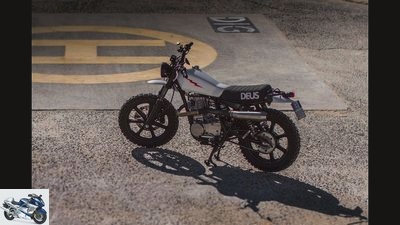
Yamaha
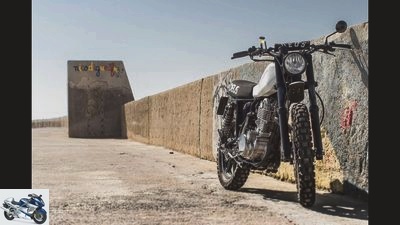
Yamaha
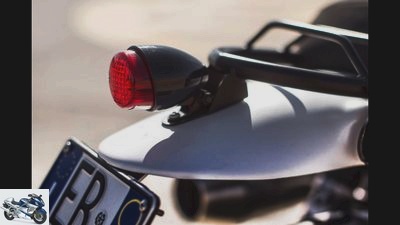
Yamaha

Yamaha
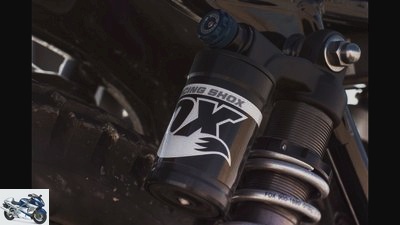
Yamaha
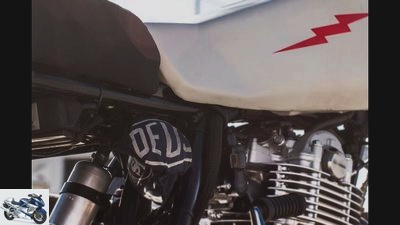
Yamaha
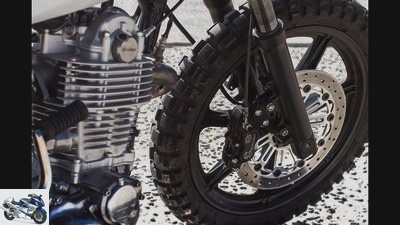
Yamaha
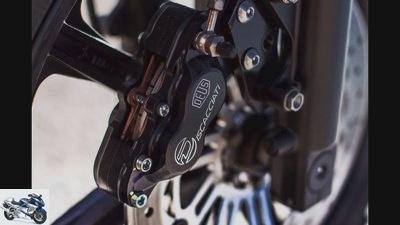
Yamaha
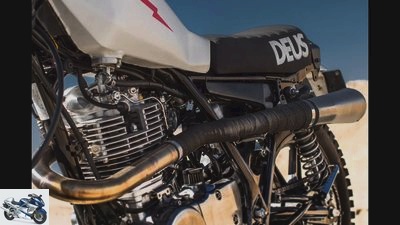
Yamaha
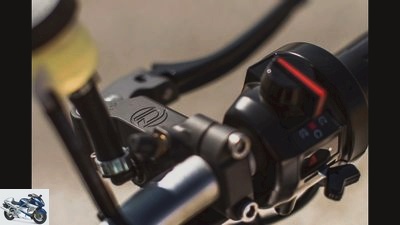
Yamaha
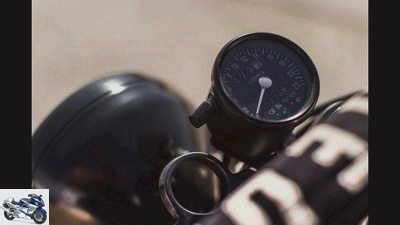
Yamaha
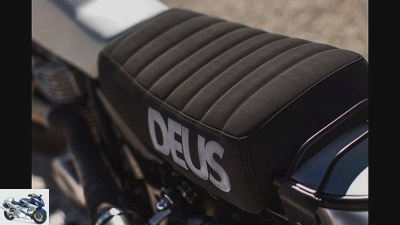
Yamaha
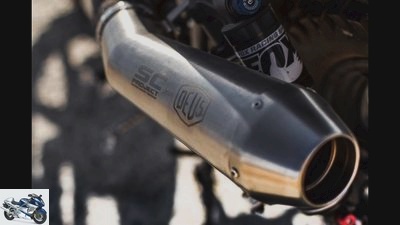
Yamaha
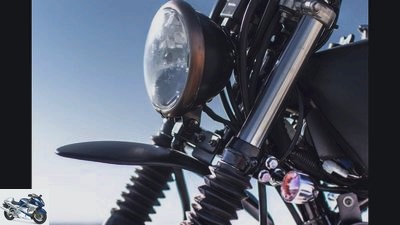
Yamaha
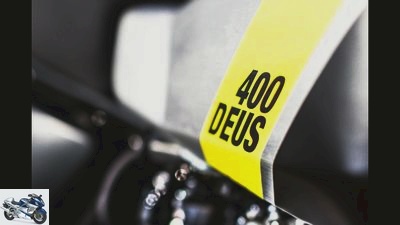
Yamaha
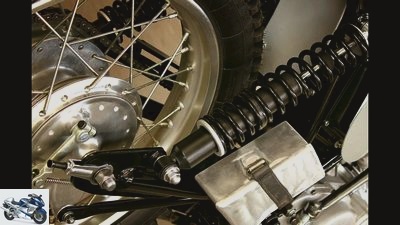
Yamaha

Yamaha
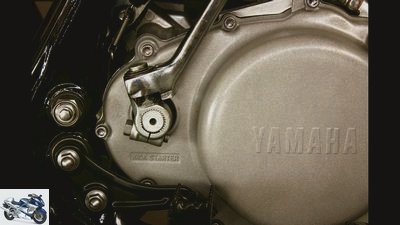
Yamaha
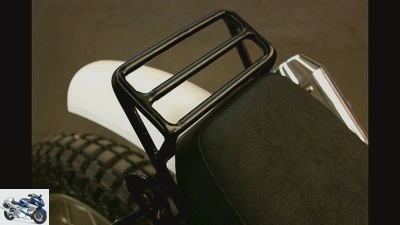
Yamaha
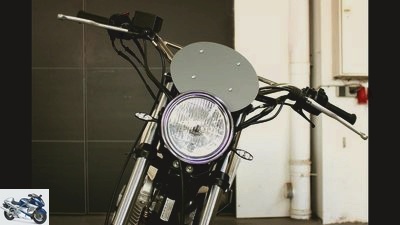
Yamaha
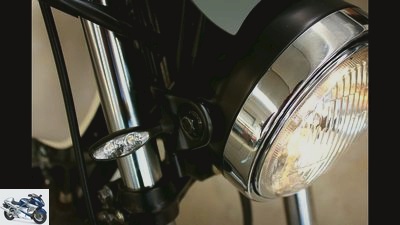
Yamaha
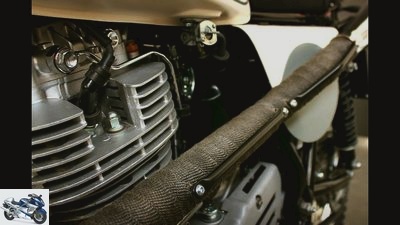
Yamaha
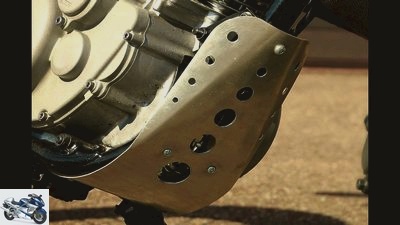
Yamaha
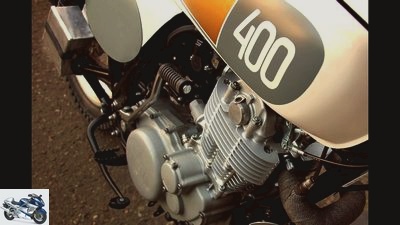
Yamaha
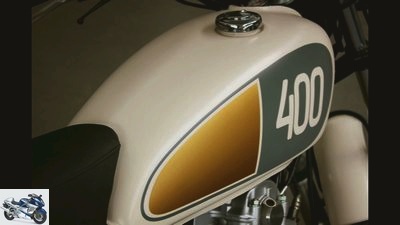
Yamaha
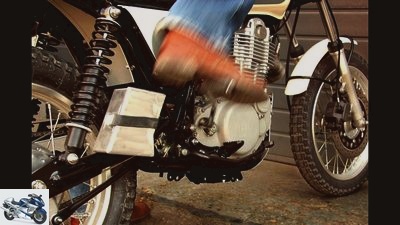
Yamaha
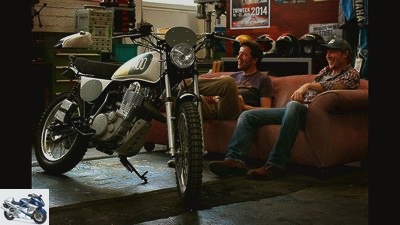
Yamaha

Yamaha
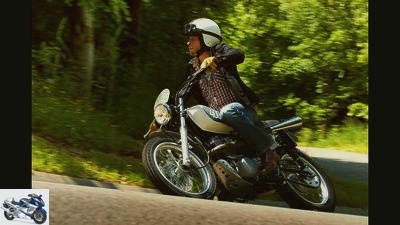
Yamaha

Yamaha
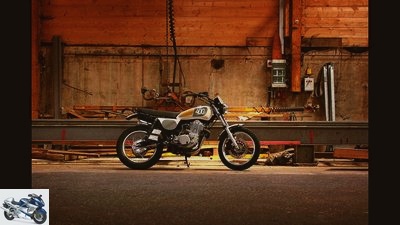
Yamaha
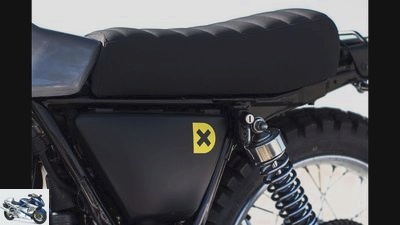
Yamaha

Yamaha
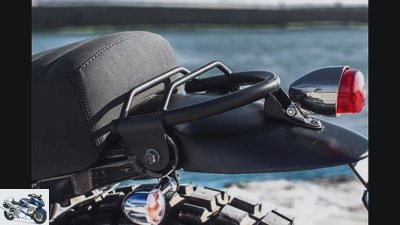
Yamaha

Yamaha
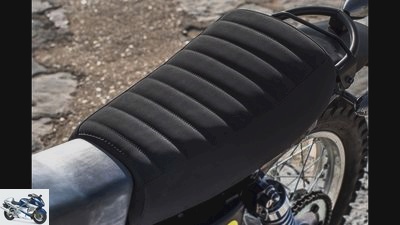
Yamaha
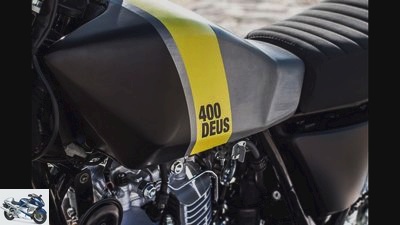
Yamaha
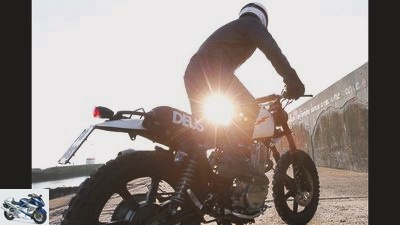
Yamaha
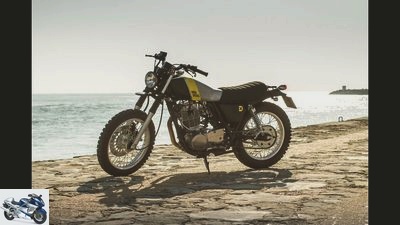
Yamaha
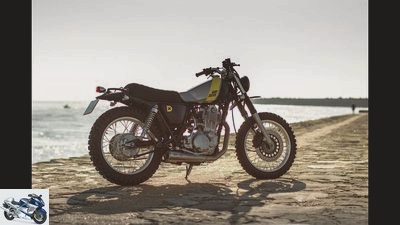
Yamaha
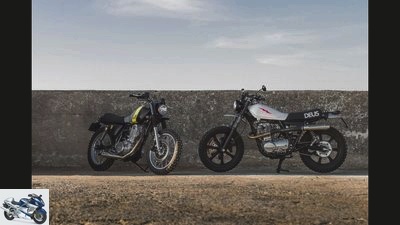
Yamaha
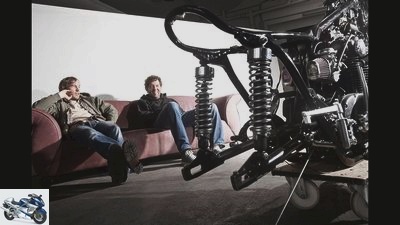
Yamaha
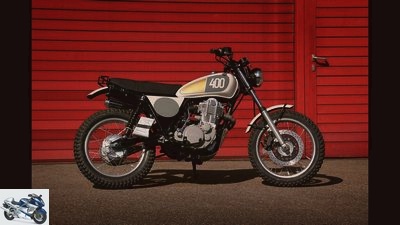
Yamaha
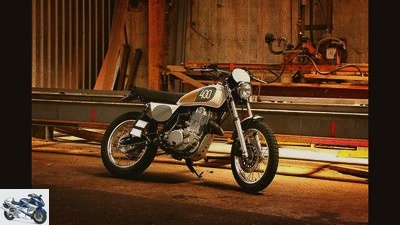
Yamaha

Yamaha
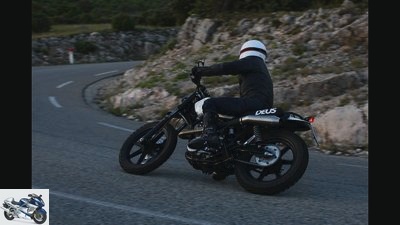
Yamaha
Performance measurement
Performance measurement.
The curves in the diagram clearly show: The Yamaha SR 400 is the tractor of the two stews. Thanks to the large flywheel mass, the two-valve engine runs smoothly and willingly from 2000 tours, but revving is not its domain. The increase in power is just as flat as the engine is tired. The mash single with four valves is carved out of different wood or cast aluminum. From 3000 to 7000 rpm it goes about its work full of vitality and revving, but does not save on vibrations. What this diagram, which shows the crankshaft power, does not show: At 90 km / h the Mash Five Hundred has around 10 hp more on the rear wheel than the Yamaha SR 400.
Data and measured values
engine
| Mash Five Hundred | Yamaha SR 400 | |
| design type | Single cylinder four-stroke engine | Single cylinder four-stroke engine |
| injection | 1 x 32 mm | 1 x 34 mm |
| coupling | Multi-panes- Oil bath clutch |
Multi-panes- Oil bath clutch |
| Bore x stroke | 85.0 x 70.0 mm | 87.0 x 67.2 mm |
| Displacement | 397 cc | 399 cc |
| compression | k. A.. | 8.5: 1 |
| power | 20.0 kW (27 hp) at 7000 rpm |
17.1 kW (23 hp) at 6500 rpm |
| Torque | 30 Nm at 5500 rpm | 27 Nm at 3000 rpm |
landing gear
| Mash Five Hundred | Yamaha SR 400 | |
| frame | Steel tubular frame | Steel tubular frame |
| fork | Telescopic fork, Ø 35 mm | Telescopic fork, Ø 35 mm |
| Brakes front / rear | Ø 280/180 mm | Ø 298/150 mm |
| bikes | k. A.. | 1.85 x 18; 2.15 x 18 |
| tires | 100/90 19; 130/70 B 18 | 90/100 18; 110/90 18 |
| Tires | Kenda Cruiser S / T | Metzeler Perfect ME 77 |
Dimensions + weight
| Mash Five Hundred | Yamaha SR 400 | |
| wheelbase | 1420 mm | 1410 mm |
| Steering head angle | 62.0 degrees | 63.0 degrees |
| trailing | k. A.. | 111 mm |
| Front / rear suspension travel | 120/70 mm | 150/125 mm |
| Seat height¹ | 810 mm | 780 mm |
| Weight with a full tank¹ | 166 kg | 174 kg |
| Payload¹ | 144 kg | 150 kg |
| Tank capacity / reserve | 13.0 liters | 12.0 liters |
| Service intervals | k. A.. | 10000 km |
| price | 3995 euros | 5795 euros |
| Additional costs | k. A.. | 180 euros |
MOTORCYCLE readings
| Mash Five Hundred | Yamaha SR 400 | |
| Top speed | 130 km / h | 128 km / h |
| acceleration | ||
| 0-100 km / h | 9.5 sec | 11.0 sec |
| Draft | ||
| 60-100 km / h | 9.8 sec | 11.3 sec |
| Consumption country road / 100 km | 3.3 liters of super | 3.6 liters of super |
| Reach country road | 394 km | 333 km |
Price comparison of the Yamaha SR 400 and the Mash Five Hundred
Used Yamaha SR 400 and Mash Five Hundred in Germany
The two stylish oldschool bikes are directly compared to each other on the used motorcycle exchange. Both the Yamaha SR 400 and the Mash Five Hundred are available in good condition and at reasonable prices: Used Yamaha SR 400 and Mash Five Hundred in Germany
Related articles
-
Husqvarna TR 650 Terra, KTM 690 Enduro R and Yamaha XT 660 R in the test
Jahn 22nd photos Jahn 1/22 Husqvarna TR 650 Terra, KTM 690 Enduro R and Yamaha XT 660 R in the enduro everyday comparison test. Jahn 2/22 Husqvarna TR…
-
BMW, Kawasaki, Triumph and Yamaha Tourer in comparison test
Gargolov 31 photos Gargolov 1/31 Tourer comparison test: Triumph Trophy SE, BMW R 1200 RT, BMW K 1600 GT, Yamaha FJR 1300 and Kawasaki 1400 GT. Gargolov…
-
Yamaha MT-07 and Kawasaki ER-6n in comparison test
fact 36 photos fact 1/36 fact 2/36 fact 3/36 fact 4/36 fact 5/36 fact 6/36 fact 7/36 fact 8/36 fact 9/36 fact 10/36 fact 11/36 fact 12/36 fact 13/36 fact…
-
Honda NC 700 S and Yamaha XJ6 ABS in the test
17th photos 1/17 Honda NC 700 S and Yamaha XJ6 ABS in a 48 hp comparison test. 2/17 Honda NC 700 S and Yamaha XJ6…
-
Husqvarna 701 Supermoto, KTM 690 SMC R, SWM SM 650 R and Yamaha XT 660 X in the test
31 photos 1/31 Power on the crankshaft. Measurements on the Dynojet roller test stand 250, corrected according to 95/1 / EG,…
-
Comparison test of the Cagiva Gran Canyon against the Yamaha TDM 850
Comparison test of the Cagiva Gran Canyon against the Yamaha TDM 850 The second face No one was like her: Enduro, athlete, tourer, fun bike ?? all in…
-
Yamaha YZF-R1 in the 50,000 km endurance test
Jacek Bilski 50 pictures Rossen Gargolov 1/50 The Yamaha YZF-R1 has passed the MOTORRAD endurance test. It took her almost 3 years for the 50,000 km …
-
Comparison test of sports enduro bikes KTM 450 EXC and Yamaha WR 450 F
markus-jahn.com 23 photos markus-jahn.com 1/23 Yamaha flies an attack on the high-flyer 450 EXC from KTM with the WR 450. markus-jahn.com 2/23 KTM 450…
-
Jorg Kunstle Top test Yamaha FZ1 / Fazer Let’s start now? We had to wait a long time for that: a naked Nippon athlete. Not rinsed soft, but light, firm…
-
BMW G 650 GS and Yamaha XT 660 Z Tenere in the comparison test
fact Comparison test of single-cylinder travel enduro bikes BMW G 650 GS and Yamaha XT 660 Z Tenere One cylinder, long suspension travel, 21-inch front…